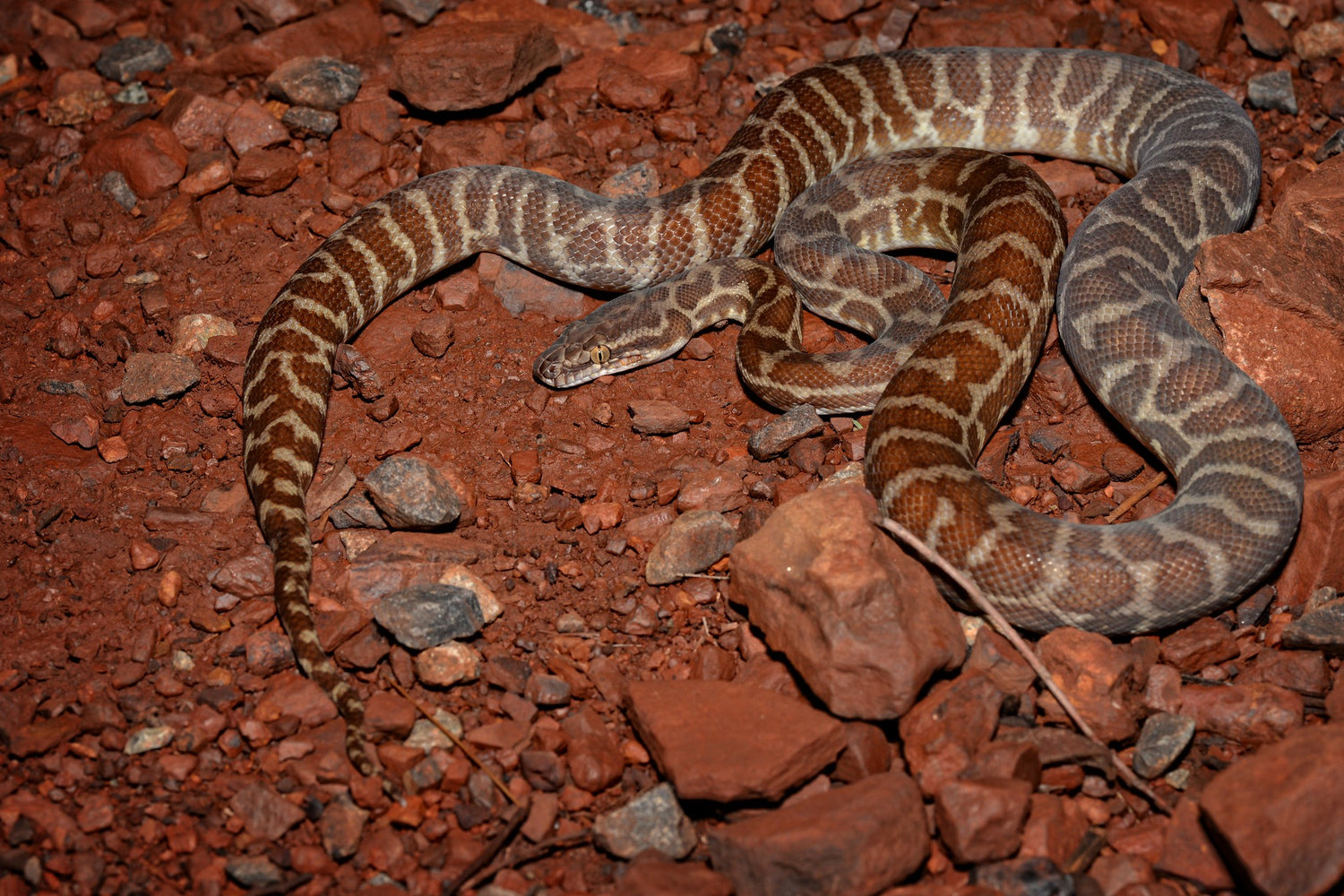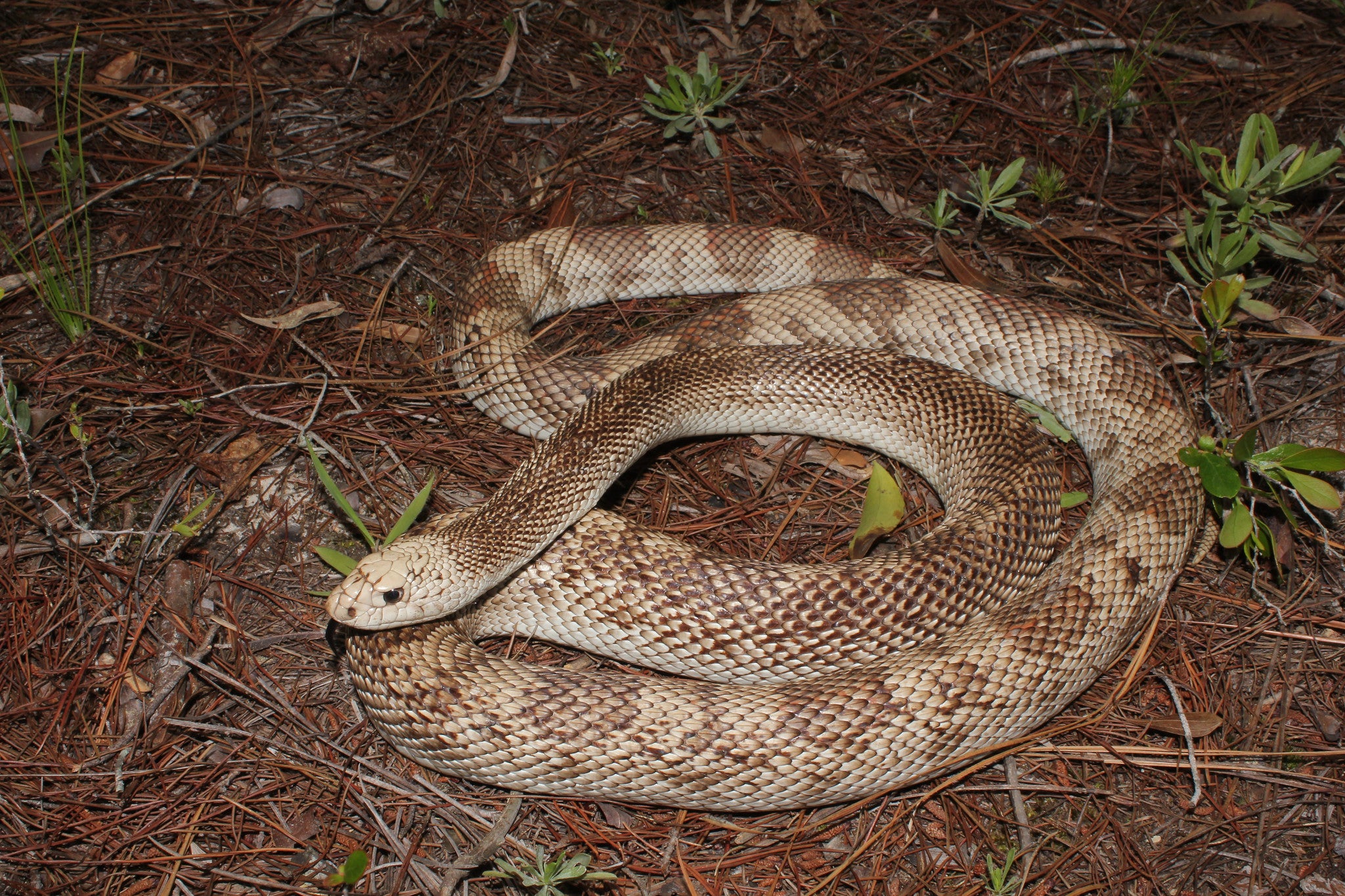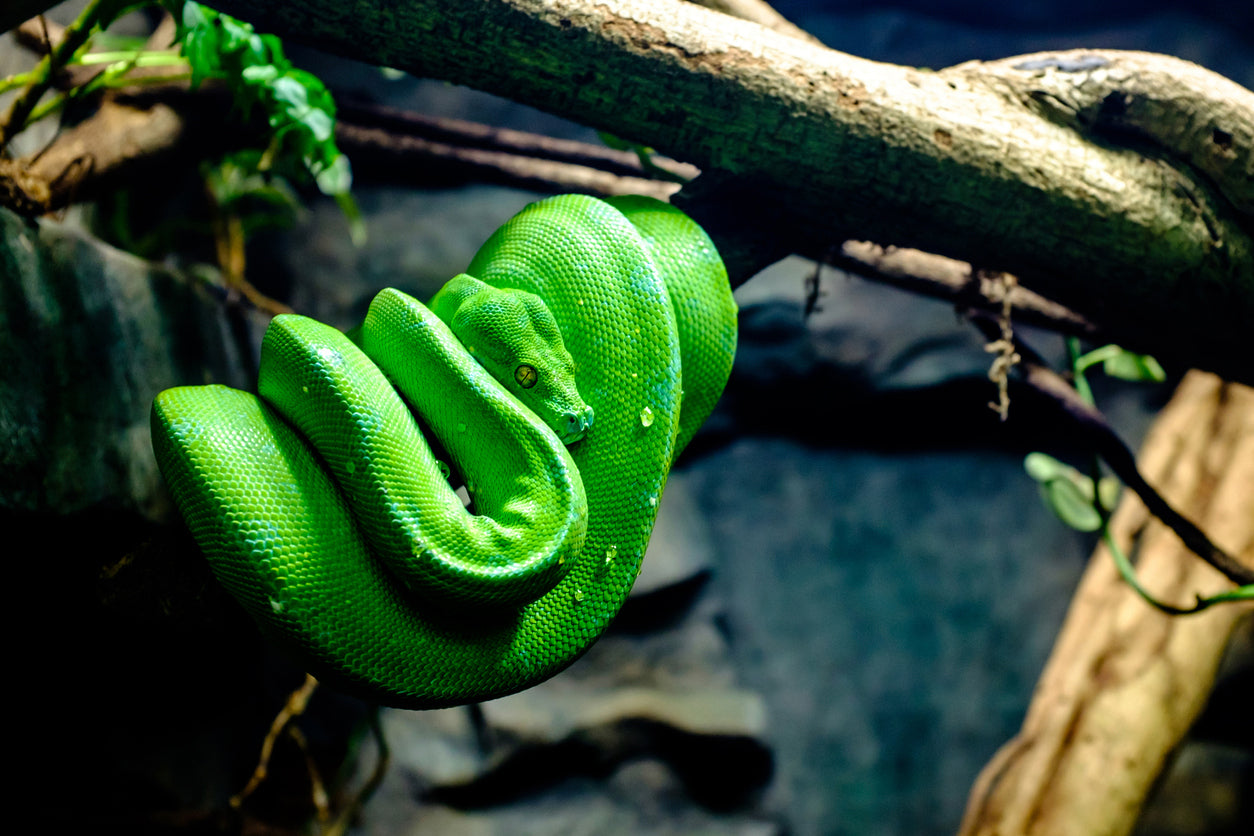The Stimson’s python (Antaresia stimsoni) is a small, terrestrial, nocturnal snake found throughout Australia, excepting the northern, eastern, and southern coasts. They are generally considered to prefer rocky outcrops for habitat, but can also be found in riparian woodland, dry woodland, savannah, scrub, and near caves with bats.
Stimson’s pythons are typically around 3’ long, with smooth scales, a narrow head, visible heat pits, and vertical pupils. Base color is typically cream to light brown with darker brown to reddish spots and blotches along the back and sides, and a dark stripe through each eye. The underside is pale.
Stimson’s pythons are easy to care for, typically docile, and make good beginner-level pet snakes. With good care, they can live 20-30 years.
How much space do Stimson’s pythons need?
Because Stimson’s pythons are such a manageable size, it’s easy to keep them in an enclosure that is large enough for them to stretch out fully, explore, and exercise. The minimum for appropriately keeping one Stimson’s python is 36”L x 18”W x 16”H. This is just the minimum, so using larger dimensions is beneficial and will happily be used!
Young Stimson’s pythons are very small and flexible, so it’s of particular importance to house juveniles in an enclosure that is completely escape-proof. Make sure the lid is secure (front-opening enclosures with hinges rather than sliding doors work best), and address any gaps the size of the snake’s head or larger.
Cohabitation (keeping multiple Stimson’s pythons in one enclosure) is not recommended.
Do Stimson’s pythons need UVB?
They can survive without it, but it’s still best practice to provide UVB lighting for optimal health and wellbeing. UVB gives snakes all of the vitamin D that their bodies need, stimulates better appetite and activity, and generally allows them to be healthier than they would be without.
The best UVB bulbs for Stimson’s pythons are:
- Zoo Med T5 HO Reptisun 5.0, 22”
- Arcadia Forest 6%, 22”
The UVB bulb should be half the length of the enclosure, housed in a reflective fixture (preferably Arcadia or Vivarium Electronics), and placed close to the heat lamp on top of the enclosure, 10-12” above the basking area. UVB is blocked by glass and plastic, so you can’t give your snake UVB by placing its terrarium in front of an open window. Also make sure that the fixture your UVB bulb is in does not have a clear plastic bulb cover.
Lights should be on for 13-14 hours/day during summer and 10-11 hours/day during winter. Alternatively, you can use a smart timer to sync the lamps with local sunrise and sunset times. This helps encourage more natural hormonal rhythms and better long-term health.
What basking temperatures do Stimson’s pythons need?
Like other reptiles, Stimson’s pythons are ectotherms, which means that they need a temperature gradient in their enclosure to help them regulate their metabolism and stay healthy.
Stimson’s pythons should have a basking temperature between 90-100°F. On the other side of the enclosure, the temperature should remain between 75-85°F. Track the temperatures in your enclosure with two digital probe thermometers. Heat sources should be turned off at night. Nighttime temperatures should be kept above 75°F, but adults can tolerate nighttime temperatures as low as 60°F.
Provide heat for your snake by imitating the sun with a pair of 60-75w incandescent heat lamps placed on one side of the enclosure, positioned over a flat basking stone and warm hide. Do not use ceramic heat emitters (CHEs), red bulbs, or blue bulbs, as these are not as effective.
If the basking temperature is too high, use a rheostat to dim the heat lamps. If the basking temperature is too low, increase the wattage of the heat lamps.
What humidity levels do Stimson’s pythons need?
Stimson’s pythons seem to do best with humidity levels around 40% and occasional spikes higher. You can track your humidity levels with a digital probe hygrometer placed in the middle of the enclosure. Weekly misting with a pressure sprayer is appropriate.
It’s essentially to provide a humid hideout to enable the snake to access a humid microclimate as needed. To create a humid cave/hideout/burrow for your snake, simply take a plastic or resin reptile hide and line it with moistened (not soaking wet) sphagnum moss. Replace this moss whenever it dries out.
What substrate is good for Stimson’s pythons?
Stimson’s pythons require a thick layer of substrate to cushion their bodies and help maintain healthy humidity levels. As an added perk, it also tends to make the enclosure more attractive.
We recommend the following substrates for Stimson’s pythons:
- Exo Terra Snake Bedding
- Zoo Med Repti Chips
- Zoo Med Repti Sand
- Exo Terra Desert Sand
Layering clean, chemical-free leaf litter on top of the substrate is a good way to provide enrichment and additional hiding options for your snake.
Substrate should be at least 2” deep and completely replaced every 3-4 months. Remove poop and urates daily, along with contaminated substrate.
What décor can you use in a Stimson’s python terrarium?
It’s terribly boring for a snake to be stuck in an enclosure with nothing in it except substrate, hides, and a water bowl. It doesn’t matter how big the enclosure is if you don’t put things in it for your pet to use and interact with.
At minimum, three sides of the enclosure should be covered and there should be multiple hiding places available. However, it’s a good idea to add other items such as:
What do Stimson’s pythons eat?
Like other snakes, Stimson’s pythons are carnivores, which means that they need to eat whole animal prey in order to get the nutrition that they need. Here is a basic feeding schedule based on snake age:
- Juveniles should be fed every 5-10 days.
- Adults should be fed every 7-21 days.
Prey items should be around 10% of your snake’s weight or no more than 1.5x its width. If the snake seems to be getting fat, reduce the frequency of feedings. Although live prey can be used, it’s safest and most humane to use frozen instead. Prey should be completely thawed in a plastic bag in warm water before offering with a pair of soft-tipped tweezers.
Remember, the key to great nutrition is variety! Aside from offering young mice and rats, young hamsters, gerbils, button quail, frog meat, and even feeder lizards can also be used to create nutritional variety in your snake’s diet.
Supplements
Stimson’s pythons can survive without vitamin or mineral supplements, but occasionally using them can help prevent nutritional deficiencies and optimize your snake’s health. We recommend Repashy Calcium Plus LoD.
Water
Your snake should have access to clean, fresh water at all times. Provide a water bowl large enough for the snake to soak its entire body if desired. Change the water daily and scrub the bowl with a reptile-safe disinfectant weekly, or whenever it becomes soiled.
Do Stimson’s pythons like to be handled?
Few reptiles actually “like” to be held, but Stimson’s pythons generally tolerate handling well. That being said, they can be pretty nervous and squirmy as babies, so it can be hard to keep them in hand! However, as they grow up, they will gain confidence and calm down.
Be gentle, and pick up the snake from below rather than from above. Support as much of its body as possible, and NEVER pick up a snake by its tail!
*This care sheet contains only very basic information. Although it’s a good introduction, please do further research with high-quality sources to obtain additional information on caring for this species.
"Antaresia stimsoni" by AlexandreRoux01 is licensed under CC BY-NC-ND 2.0.




Leave a comment
This site is protected by hCaptcha and the hCaptcha Privacy Policy and Terms of Service apply.